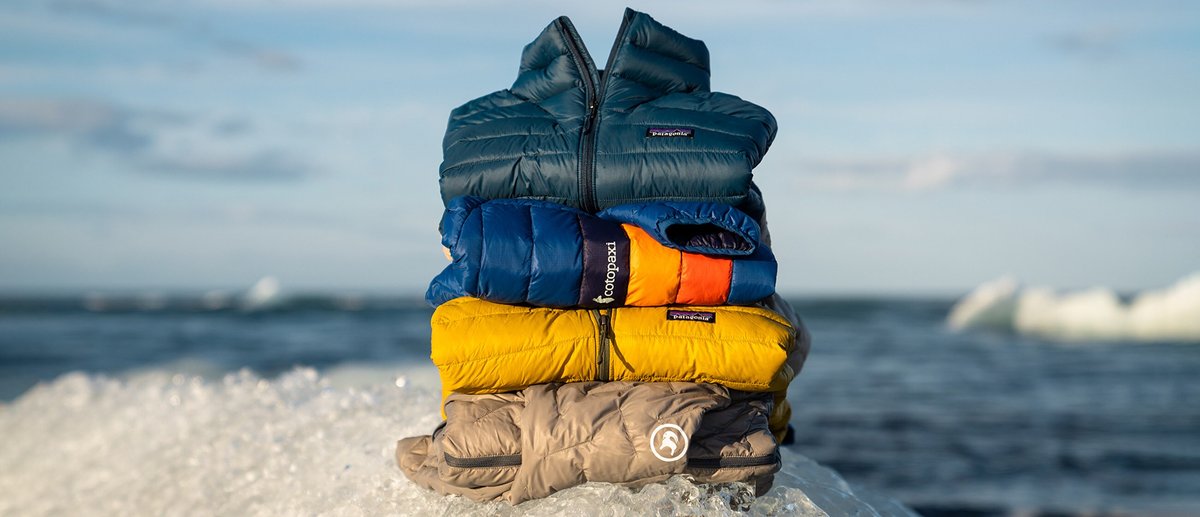
How To Choose An Insulated Jacket
Synthetic, Down, And More
Staying warm is the key to having fun in freezing temps. Insulated jackets come in all weights, styles, and different fill materials. If you’re confused, here’s a breakdown of the two basic types of insulation and how you might go about choosing between them.
The overriding principle at work in insulated jackets (and sleeping bags, mittens, or any other insulated apparel) is the same: air is trapped in the small spaces between the filaments of down or strands of polyester, providing warmth in cold conditions. Loftier (or puffier, if you will) materials consist of more air, and offer a greater warmth-to-weight ratio. Overall, down is lighter, more compressible, and longer-lasting than synthetic insulation. It’s also more expensive and doesn’t insulate very well if it gets wet. On the other hand, synthetic insulation is slightly heavier, slightly less compressible, and wears out a bit quicker. On the plus side, it’s also less expensive (in general) and insulates much better if you get it wet. Which you choose will depend on your price point and how you plan to use your jacket.
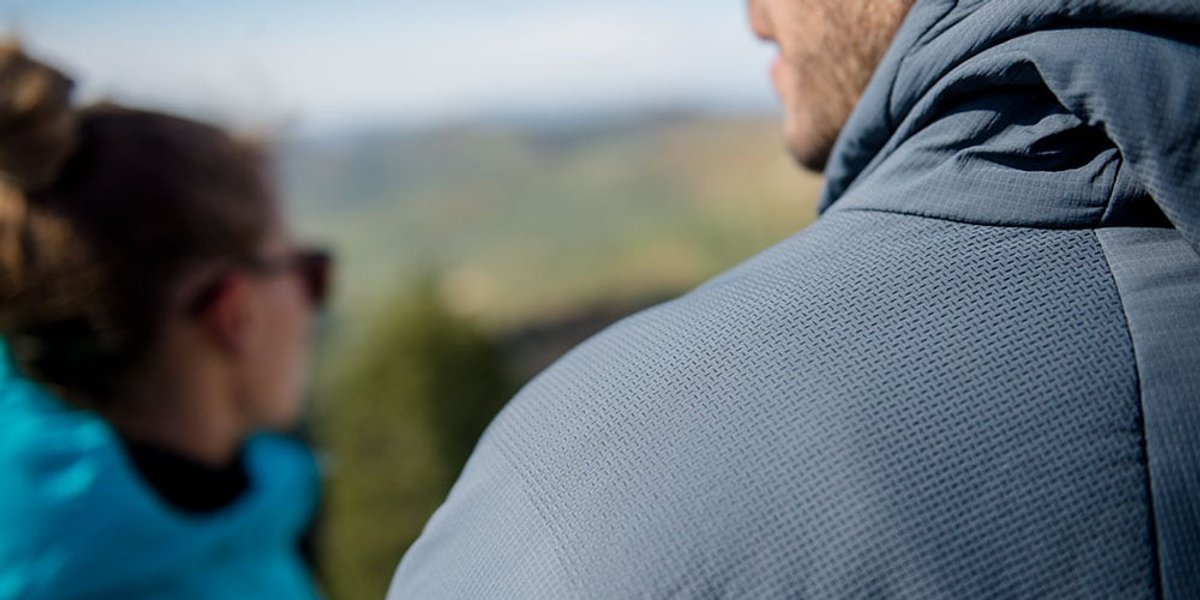
Synthetic Insulation
Synthetic insulation is made up of fine filaments of polyester that are spun to create pockets of air between the fibers. Higher-quality, softer-feeling insulation is usually made up of finer filaments with more air space between them. Higher-end synthetic insulation may also be treated for water- and odor-resistance, to improve performance in outdoor settings and active uses. As mentioned earlier, synthetic insulation will usually outperform down in wet, humid conditions, and will dry more quickly.
How much insulation do you need in a jacket? The thickness of synthetic insulation is usually expressed as grams per square meter (note that this is NOT a measure of the total weight of the insulation in a jacket). So, a jacket with 200g insulation is going to be thicker and warmer than a comparable jacket with 100g insulation. As a rule of thumb, 50-100g jackets are great for spring or fall, or in situations where you expect to be wearing several layers, while 100-200g jackets are ideal for more frigid conditions. However, these rules don’t totally apply for the newer generation of synthetic insulation like The North Face’s Thermoball or Marmot Featherless; these new technologies are engineered to more closely resemble down and will be lighter yet warmer than other types of synthetic insulation.
A new type of synthetic that is starting to show up is high-tech insulated jackets that are engineered to breathe in high-output activities. This helps resolve the old dilemma of how to dress for aerobic activities in cold weather, since you can go longer before overheating or perhaps avoid it altogether. Examples of this include The North Face Ventrix, Patagonia Nano-Air, and any jackets with Polartec Alpha .

Down Insulation
With a warmth-to-weight ratio three times that of synthetic insulation, down is pound-for-pound the best insulator in the world. Down used for insulation is derived from geese, ducks, or other waterfowl, and is a byproduct of the process of raising these animals for food. Several companies, including The North Face and Patagonia, are establishing standards to ensure that the down used in their products is cruelty-free.
One thing to consider when looking at down jackets is their ‘fill power.’ This number is an indicator of the quality of down; the higher the number, the more volume a given weight of down will occupy. 800-900 fill down is considered premium insulation with that desirable cloud-like feel, while down in the 500-600 range will require more down (making them feel heavier and bulkier) to achieve the same level of warmth.
Water-Resistant Down
Down feathers offer powerful warmth, but they do have a weakness: moisture. Water-resistant down is simply down insulation treated with a water-resistant coating at a molecular level. Before the down is packed into a jacket, each feather is treated with a special nanomolecular coating that allows the feather to resist moisture (also called a hydrophobic coating). Because this coating is applied at such a micro scale, it adds almost no weight and it doesn’t affect the ability of the down feathers to loft, so there’s no lost warmth.
Types of Insulated Jackets
What exactly does it mean for a jacket to have insulation? Well, that depends on what kind of jacket you’re talking about. We’ll break it down into four basic categories.

Lightweight Puffies: These jackets enclose insulation in a lightweight shell (usually a low-denier nylon) that features a DWR (durable water repellent) treatment to shed light precipitation. They can stand alone on a cold day, or they can be worn under your shell in place of a standard midlayer. For less weight and bulk than a fleece, you can get much more insulation out of a relatively thin layer of down or synthetic insulation. The only real disadvantage is that they won’t insulate as well as fleece if you get them soaked, but that’s pretty hard to do if you have a high-quality shell.
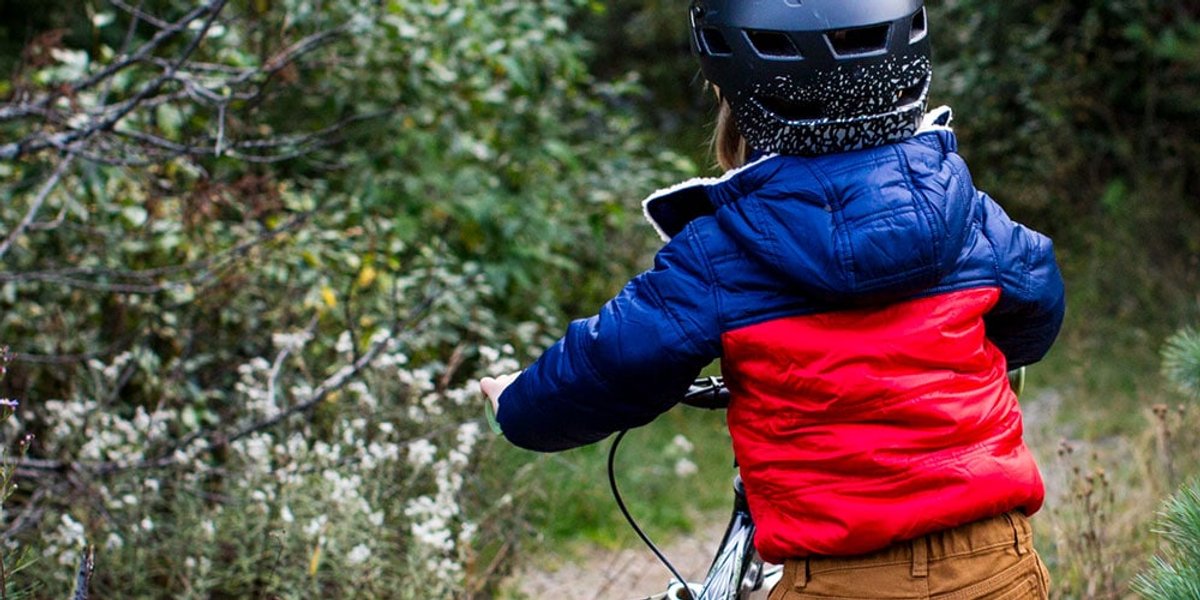
‘Hybrid’ Jackets: Jackets in this category feature a combination of quilted insulated panels in key areas balanced with fleece or stretch material in the arms, sides, and, occasionally, across the back. This combination of materials makes the jacket easier to layer and more comfortable in highly aerobic activities. It offers the benefit of down or synthetic insulation around your core.
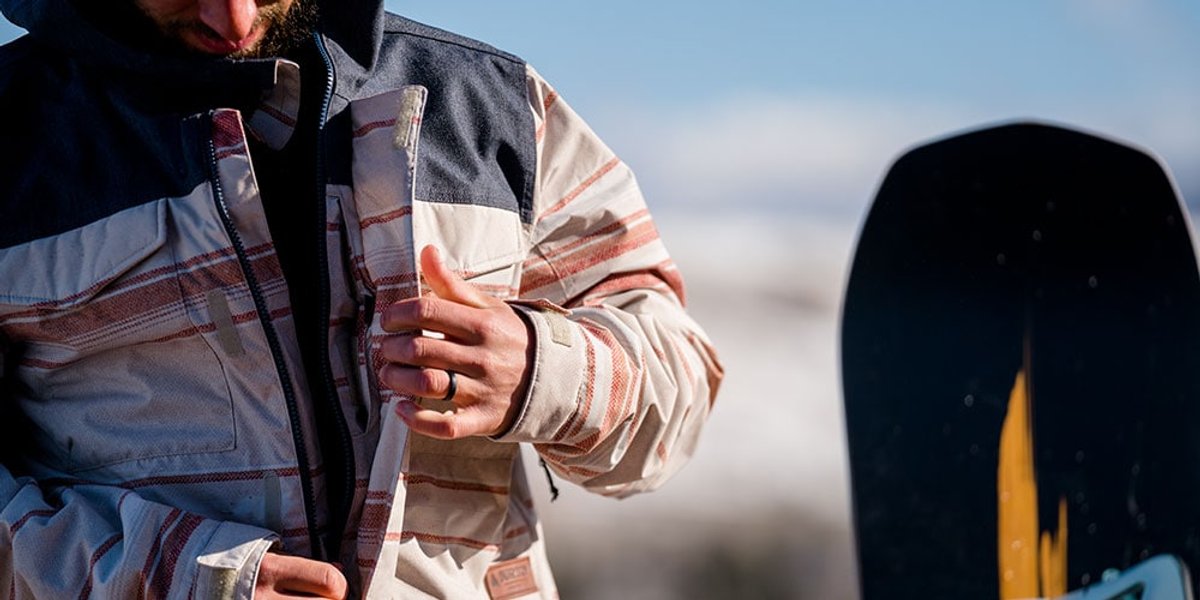
Insulated Ski and Snowboard Jackets: If you ride in ultra-cold weather on a regular basis or just don’t want to mess around with a bunch of layers, then an insulated ski or snowboard jacket is the ticket. The amount of insulation runs the range from just enough that you don’t need that second midlayer to so big and puffy that you’ll roast with anything but a T-shirt underneath. What you choose depends on how cold it gets in your neck of the woods. One thing these jackets all have in common is a waterproof breathable shell to protect the insulation inside from the elements. The quality and effectiveness of this fabric can vary substantially; you should choose your insulated garment based on the conditions you anticipate riding in.
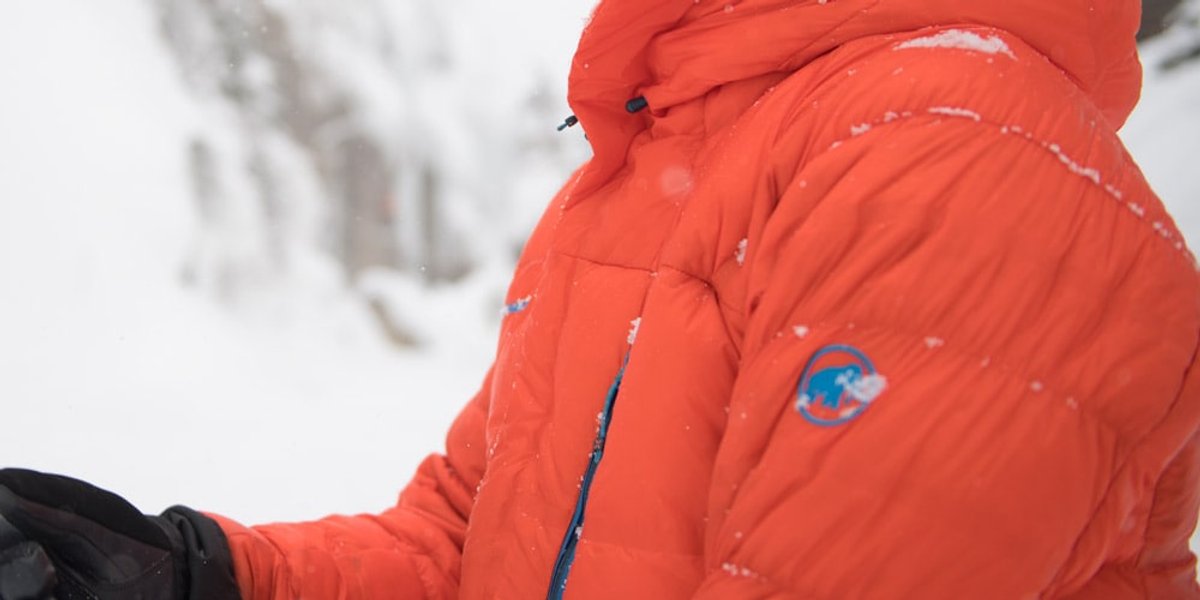
Insulated Parkas: These giant puffy jackets go on over everything you’re wearing, including your shell jacket. Climbers call them belay jackets because they’re generally used only when not climbing, but they’re also really useful for rest breaks on backcountry ski tours, winter camping, ice fishing, or any other time it’s going to be super cold.

Insulated Casual Jackets: Ski days and expeditions aren’t the only times you need to stay warm. In many places, an insulating casual jacket is a winter necessity. A lightweight midlayer puffy will often suffice, but these usually have thin face fabric that can snag easily and doesn’t hold up to serious cold, precipitation, or wind. If you do a lot of walking or attend outdoor events in the winter, a more wind- and water-resistant insulated jacket will serve you well. A longer jacket will keep you from freezing your cheeks off when you’re standing in a long line or trekking to the train station.
Weight & Packability
Depending on your needs, you may want a jacket that can pack down small or one that is as light as possible. For backpackers, ski tourers, bikepackers, and others, these needs can often come ahead of any features on a jacket. Down jackets with 800+ fill are the most compressible, making them a good match for those trying to travel fast and light. If you’re mostly needing a jacket for around town or more casual outings, this becomes less of a concern for the day to day.
Additional Features To Look For
Pockets Whether a jacket has hand-warmer pockets, chest pockets, or internal stash pockets can make or break its usefulness for you. Internal pockets are great for ski gloves in the midst of a day on the snow, while chest pockets keep a phone or wallet easy to reach.
Hem Drawcord Regardless of the fit, you may sometimes want a jacket to seal up against a cold wind. An elastic drawcord on the hem helps make sure you keep all that warm air around you inside the jacket and not escape from the bottom of the hem.
Hood Drawcord Some hoods are helmet compatible and will have a drawcord to adjust that fit. Others have a drawcord to help you cinch the hood closer to your face, making it that much warmer when the temperatures dip.